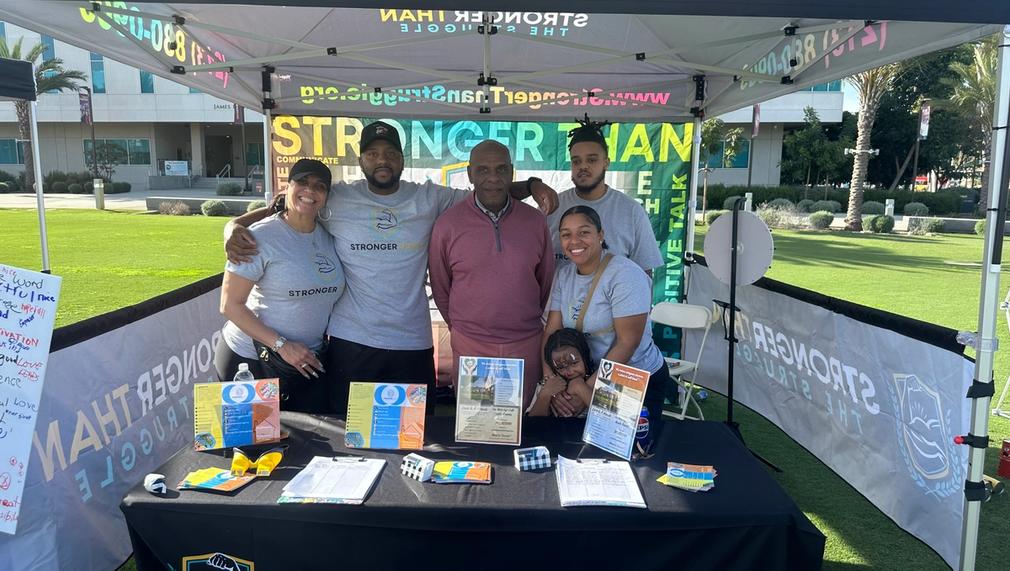Thrive Stronger Together: LA Homeless Resource Network
Our program aims to create a comprehensive resource network for the homeless population across Los Angeles County. By bringing together various community organizations, government agencies, and volunteers, we strive to provide essential resources such as shelter, food, healthcare, job training, and mental health support. Data showed 75,518 people experienced homelessness in Los Angeles County, and 46,260 in Los Angeles. Homelessness in Los Angeles County is a complex issue with numerous barriers that individuals experiencing homelessness face.

What is the primary issue area that your application will impact?
Affordable housing and homelessness
In what stage of innovation is this project, program, or initiative?
Pilot or new project, program, or initiative (testing or implementing a new idea)
What is your understanding of the issue that you are seeking to address?
Homelessness in Los Angeles County is a complex issue with numerous barriers that individuals experiencing homelessness face. Addressing homelessness in LA County requires a multifaceted approach that addresses these barriers comprehensively, including resources to affordable housing options, shelter, food, healthcare, job training, and mental health support, expanding access to healthcare and mental health services, implementing supportive housing models, and addressing systemic inequities and discrimination. Addressing the impact of street homelessness on businesses requires a coordinated and comprehensive approach involving collaboration between government agencies, businesses, non-profit organizations, and community stakeholders to implement effective solutions that address the root causes of homelessness while supporting the needs of businesses and promoting inclusive and vibrant communities.
Describe the project, program, or initiative this grant will support to address the issue.
Creating van that can be converted into a mobile resource center. The van will be spacious enough to accommodate staff, supplies, and has the capability for basic amenities like electricity. The mobile resource van will be accompanied by a homeless mobile shower trailer a portable unit furnished with shower stalls, toilets. It can be transported to various sites to offer hygiene services to homeless individuals. This initiative aims to assist them in maintaining proper hygiene and appearance, facilitating their ability to apply for jobs and present themselves professionally in business settings.
Conversion of the van into a fully equipped mobile resource center. This includes installing shelving, seating, desks, computers, internet connectivity, basic medical equipment (first aid kits, blood pressure monitors), hygiene supplies, and other necessary resources. Providing mobile computers to the homeless would allow them to access online resources such as job search platforms, housing assistance websites, government services portals, and educational programs. This immediate access can help them apply for jobs, find shelter, access healthcare information, all of which are essential for improving their circumstances. Additionally, mobile computers can serve as communication tools, enabling them to stay in touch with support networks and access virtual counseling services. The van will be operated by case managers, social workers, outreach workers, and a driver.
Describe how Los Angeles County will be different if your work is successful.
Stronger than the Struggle aims to comprehensively address homelessness in Los Angeles County through multifaceted strategies. Street Outreach Teams will actively engage with homeless individuals, while Community Events will provide essentials and information on services. Our Mobile Resource Centers will strategically be located throughout the county will offer resources and referrals to comprehensive support and case management services, alongside skill-building workshops. Housing Assistance initiatives include emergency shelter beds, transitional housing programs, and housing navigation services. Referrals for healthcare services will include substance abuse treatment and trauma-informed care. Additionally, employment and education programs will empower individuals for successful reintegration into society. This program will bridge the communication gap between larger service providers and the homeless by understanding of both parties' needs.
What evidence do you have that this project, program, or initiative is or will be successful, and how will you define and measure success?
The strategy for evaluating the effectiveness of the program includes focusing on measurable outcomes such as housing stability, employment rates, healthcare access, and substance abuse reduction. This involves conducting surveys and interviews with participants to gather qualitative insights into their experiences and satisfaction levels. Additionally, assessing partnership engagement with local stakeholders and government agencies is crucial for leveraging resources. Calculating the social return on investment helps quantify the program's benefits compared to its resources. Implementing data tracking systems ensures consistent monitoring of participation, progress, and outcomes. Setting specific homelessness reduction goals and regularly evaluating progress towards them is also essential.
Approximately how many people will be impacted by this project, program, or initiative?
Direct Impact: 800.0
Indirect Impact: 5,000.0